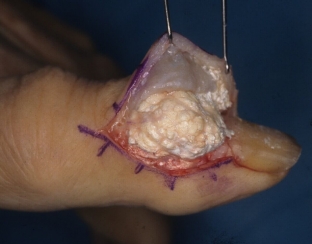Gout – this is one of the most common endocrinological diseases associated with metabolic disorders. With this pathology, the processes of synthesis and excretion of uric acid are disrupted, as a result of which it circulates in excess in the blood, accumulating in the joints, tendons, cartilage, interstitium of the kidneys and blood vessels. Treatment of gout – it is always a very long and laborious process, which is aimed primarily at stopping the progression of the disease. Knowledge of the causes of gout and the main pathogenetic mechanisms of this pathology is necessary for the doctor in order to select the most effective treatment regimen for the patient.
Causes of gout: classification of the disease by etiology
The basis for the development of gout – this is a violation of purine metabolism, namely an increase in the level of uric acid.
Hyperuricemia can result from increased production of uric acid due to increased synthesis of endogenous purines, or it can result from low excretion of uric acid.
In some cases, gout is caused by a combination of these two mechanisms. Depending on the etiological factor, gout can be primary or secondary:
- primary gout – this is an independent disease, the cause of which is often a genetically determined defect in the enzymes that are involved in the metabolism of purines;
- secondary gout – occurs against the background of other diseases, such as psoriasis, myeloid leukemia, hemoglobinopathies, and so on, or may develop as a result of the use of certain drugs.
Causes of gout: pathogenesis of the development of the disease
In order to understand the mechanism of the development of the disease and develop an effective therapeutic regimen, it is necessary to carefully study its pathogenesis, which is detailed and accessible in this article on estet-portal.com.
In the development of gout, 4 phases of pathogenesis are distinguished:
- First phase – hyperuricemia and accumulation of urates in the body
Gout develops due to increased urate biosynthesis and/or reduced urinary excretion. In hyperuricemia, secretion of uric acid in the distal tubules of the nephron
increases, but the kidney is unable to remove all excess uric acid from the body.
Depending on the degree of uricosuria, they are isolated & nbsp; three types of gout:
- metabolic type: high uraturia (more than 6 mmol/day) and normal clearance of uric acid (7-9 ml/day);
- renal type: low uraturia (less than 1.8 mmol/day) and reduced clearance of uric acid (3-3.5 ml/min).
- mixed type: normal or reduced uraturia and normal uric acid clearance.
- Second phase – urate deposition
Hyperuricemia and decreased excretion of urate in the urine, as the main causes of gout, lead to the fact that the tissues of the body are deposited sodium monourate crystals. The accumulation of urates can be observed in cartilage and articular parts of bones, in synovial membranes, tendons, interstitial tissue of the kidneys, sclera of the eyes and even blood vessels.
- Third phase – acute gouty inflammation
Urate microcrystals deposited in the joint cavity activate the Hageman factor, kinins and complement components, which leads to an increase in the permeability of the vascular wall and an influx of neutrophils. Cytokines and lysosomal enzymes are released during phagocytosis of urate crystals. All this underlies the development of acute gouty inflammation.
- Fourth phase – chronic gouty inflammation
This phase of the pathogenesis of gout develops several years after the onset of the disease. As a result of the deposition of uric acid crystals in soft tissues & nbsp; tophi are formed – gouty granulomas. They are localized most often in the subcutaneous tissue over the joints of the foot and hand, on the auricles, in the area of the elbow joints. It is the appearance of tophi that signals the development of chronic inflammation in gout.

Causes of gout – it is always an excess of uric acid in the body that has arisen against the background of certain pathological processes.
Knowledge of the etiology and pathogenesis of gout is necessary to find the correct and most effective method of treating the pathology, which will stop the progression of the disease and improve the patient's condition.







Add a comment